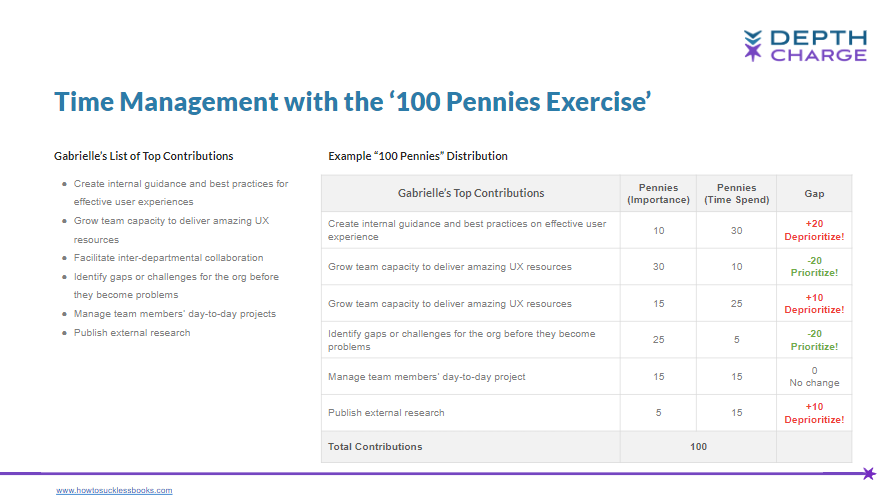At some point, you’re going to get lost in a pattern of trying to complete the mountain of tasks that your job will demand of you day in and day out. Like Sisyphus of Ancient Greek myth, every time that you’ll start to think you’re done with all of the work that your leaders have piled onto you, a new influx of requests will launch onto your desk—whether virtual or actual–and you’ll start the whole process all over again.
This rhythm makes it easy to forget that there are other things outside of the immediate tasks requesting your attention that you should be spending time on. One of the first of these other priorities that gets left by the wayside is self-development. That’s why, even though 94% of employees recognize the benefits of learning, more than half (51%) don’t take advantage of any workplace learning opportunities (data according to chieflearningofficer.com). You’ll look up to find that years have gone by and you haven’t attended one class, tried to build a new skill, or learned anything new about yourself. You can’t get that time back, so don’t let this happen to you!
A good way to avoid this situation is to maintain a record of your learning goals and progress. This practice serves a number of useful purposes. First, committing to regularly revisiting your goals will ensure that you stay focused on a career vision and goals that you’ve set for yourself (and, if you don’t yet have these, stay tuned for “How to Suck Less at Managing Your Career,” coming in early 2025!). Second, keeping track of what you’ve learned will build in opportunities for self-reflection. Looking back and thinking critically about new skills and perspectives is crucial for successful development. Numerous studies have shown that taking time to reflect after learning increases your brain’s ability to form new insights, integrate understanding of different patterns, and improve your performance with new abilities.
Additionally, keeping track of what you’re learning will alert you when you’re actually not learning. If you find that, actually, you’re not developing new abilities in your current role, it’s time to either look for some new ways to grow or start searching for a new role.
Creating a learning tracker doesn’t have to be complicated! All you really need is a system that prompts you to reflect on your development goals, what you’re learning right now, and how your current development supports your growth goals. You could do this by journaling, if that’s your jam, or with a simple matrix like the example below.
| Learning Goals: | Current Activity: | How Activity is Supporting Progress Toward Goal: | How I’ll know When It’s Time to Move on and Next Steps |
| Figure out if I like research-heavy jobs | My current job | 70% of my time is doing research projects. I’m getting a lot of exposure to this type of work! | At the end of the year I want to see how I’m doing—both in my performance review and in my general happiness. I’m going to reassess then to figure out if I need more exposure or if that was enough and I’m ready to make a decision. If the latter, I’ll discuss next career steps. |
| Get better at managing my time | Taking a project management course offered by my company | Hoping the project management methodologies in the course will help me get organized so I can be clearer about the different work I need to do | Once I feel like I understand all of the demands on my time (by getting organized), I should be able to make a sequence for what to work on. If I feel comfortable doing that, it’s time to then move on to learning more about how to communicate about my time to stakeholders. |
| Learn how to be a better manager (specifically how to motivate teams and inspire performance) | Reading “How to Suck Less as a Manager” by Ben Arendt | Book provides actionable advice and tools to improve how I connect to teams and develop reports. | Should be done reading book within the next two weeks, then going to connect w Meenakshi to do a mini-book club. Will see after that what, if any, management lessons I want to focus on for next activity. |
Regardless of how you choose to keep track of your learning progress, it’s important to include consideration of how you’ll know you’ve achieved your next milestone. In the above example, our learner identifies either specific dates by when they’ll need to have completed some activity, or a condition which will indicate that they’re ready to move on. Having concrete and/or quantifiable conditions that tell you when you should consider your activity completed.
I suggest performing this activity about every three months to ensure you’re on course without driving yourself crazy!
Visit depthchargeconsulting.com/tools-and-templates for a blank copy of this tracker you can use for your own development.




